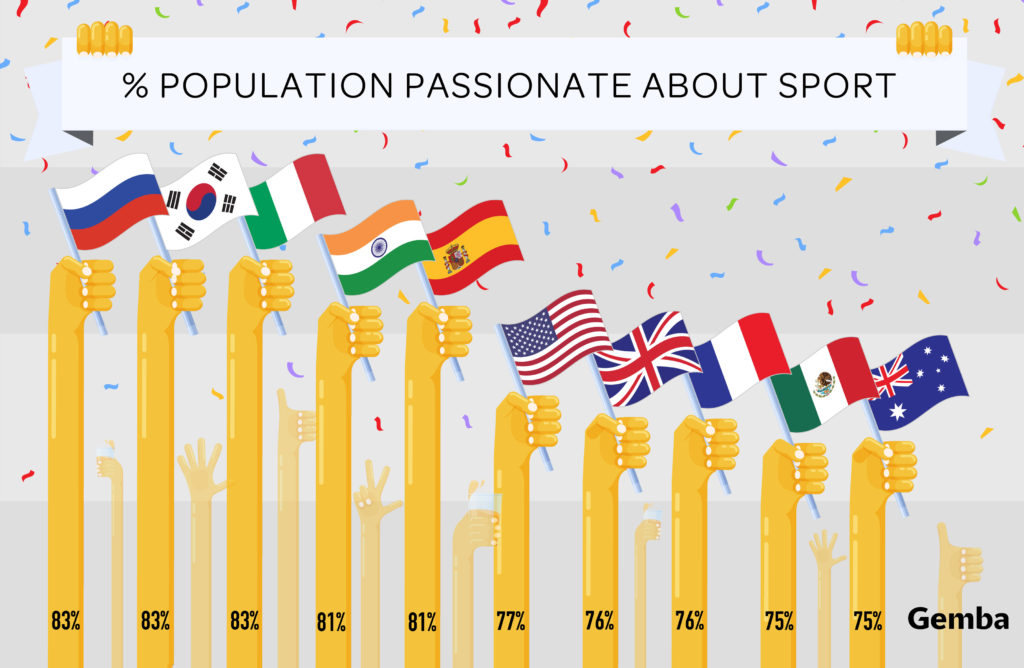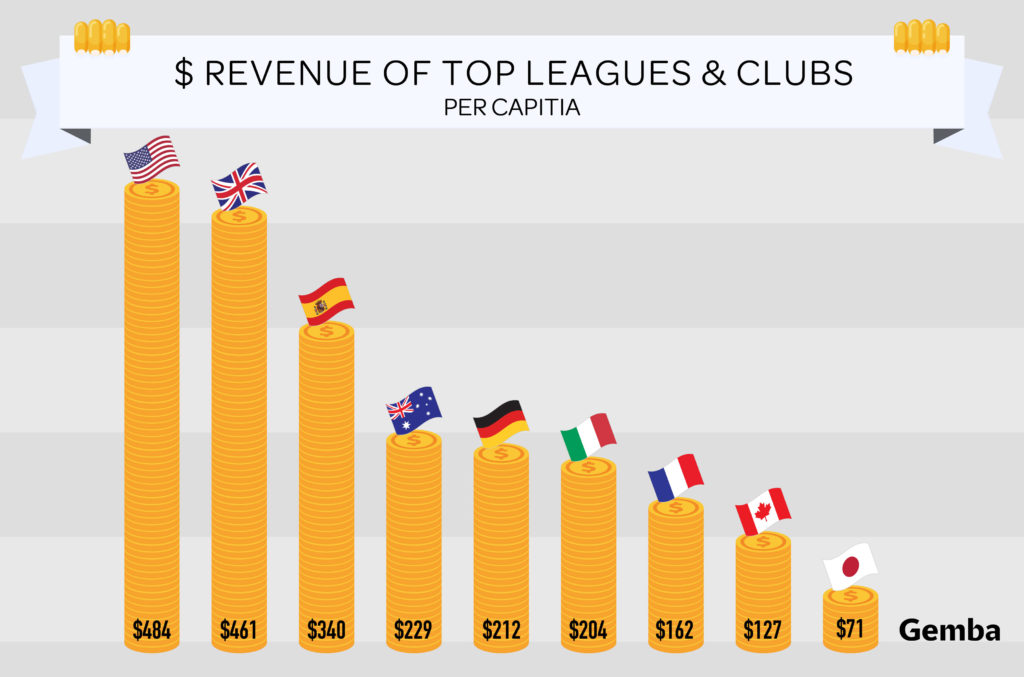You wouldn’t be alone in thinking that Australia is a country obsessed with all things sport.
Melbourne and Sydney have so many professional teams that they are arguably the most saturated sports markets in the world. Melbourne regularly sits atop SportsBusiness International’s ‘best sporting cities in the world’ rankings, taking home the title in 2016. And anyone who lives in Australia will tell you that sport is a major part of daily life.
But Gemba’s research shows that Australia is actually below average compared to the top economies in the world in terms of sports passion. Our research asks people across the globe how passionate they are about specific sports, and 75% of Australians are fanatical about at least one of the most popular sports in the land. This might sound like a lot, but when you compare this to the global scale, this ranks Australia equal ninth out of the top 15 economies in the world.

If you look at a league level, the story is even more pronounced. Australia’s most popular leagues are, in order, AFL, NRL and the fledgling BBL. The percentage of Aussies fanatical about each league ranges from 22-29%. In the UK, however, 46% of the population is a fanatic of the EPL. In the US, 53% are crazy about NFL, and that number is 43% for the MLB and 36% for the NBA. Even in Mexico, there is more passion for the NFL, MLB and NBA than Australians have for any sports league.
So where is the disconnect?
What Australia does have is a robust sporting economy. Gemba research shows that Australia’s major professional leagues and clubs generate the 8th most revenue of any country in the world. On a per-capita basis, Australia comes in an impressive fourth.

This strong performance is driven by a number of factors, including a healthy economy (10th in the world in disposable income per capita) and rights holders adept at commercialising their audiences. Gemba data shows that the AFL and the NRL generate more revenue per fan than any other major professional league in the world, beating out the likes of the NFL and EPL. While Australia’s population may not be large and its passion for sport not massive when compared to other countries, Australia’s rights holders are doing a great job of generating income, whether through ticket revenue, broadcast dollars, sponsorship or any other revenue stream.
What are the implications for rights holders and brands?
The Australian commercial market for sport is out of balance. There are lots of leagues and even more teams, yet comparatively few fans to go around. This means the supply of sponsorship opportunities outweighs the demand for sponsorship assets. Put simply, there’s a war amongst rights holders to find brand and commercial partners. The strong economy, though, means that there is upside for rights holders and brands who execute well.
If you are a rights holder, you need a clear commercial strategy. Gemba has worked on commercial strategy with a number of rights holders, from leagues to teams to venues. In our experience, the best organisations understand how their fans fit particular sponsors’ objectives. They have a clear view of their commercial inventory and how much their sponsorships are worth in the market, and they use this knowledge to build targeted, transparent sponsorship pitches.

Having a clear sponsorship strategy and approach puts you in the best position to optimise your commercial revenue in a crowded market. Given that rights holders in Australia on average are doing a good job at generating commercial dollars, a clear strategy is a must-do (not a nice-to-have) in order to ensure you’re not left in the dust.
Based on our work with leading brands across Australia, we also understand that the challenge is different on the brand side, especially if you are not looking to sponsor a top-tier league. There are many rights holders that you could potentially sponsor, but the difficulty is understanding which makes the most sense for your brand and your objectives. You need a clear understanding of the differences in fan bases for various properties – i.e. how are they different demographically? What are they passionate about? How can you best reach them? How do they spend their money?
Then, once you have entered into a sponsorship, you need a clear plan for how to best leverage your partnership. The crowded sponsorship market means that a brand must nail the execution at every opportunity. In a strong economy, there is a significant upside to turn sponsorship into revenue.